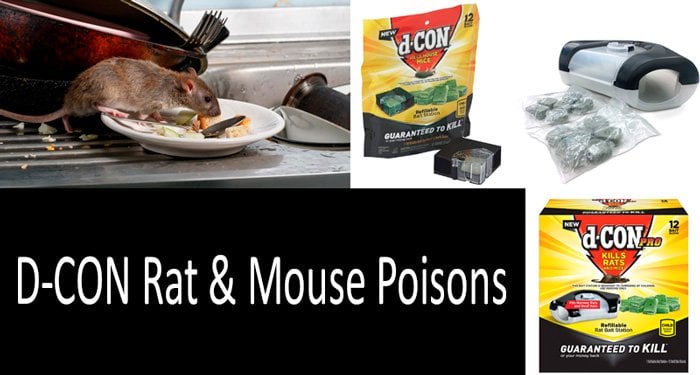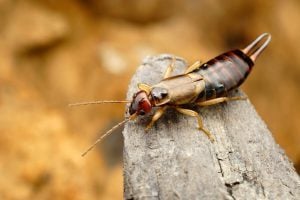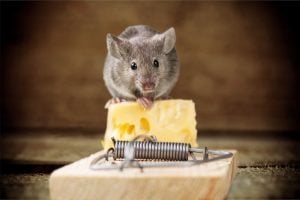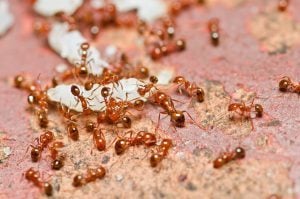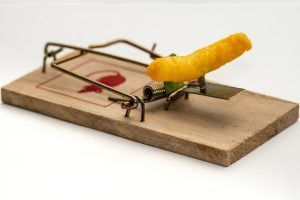What is the best d-CON poison? This depends on the type of rodent problem you have. If you are dealing with a mouse infestation, choose the d-CON Corner Fit Mouse Bait Station designed specifically for house mice. Made with a window for bait monitoring, it is weather- and tamper-resistant.
To kill rats, opt for the d-CON Rat Poison Bait Station. While this product uses the same cholecalciferol-based poison blocks as the above-mentioned one, it is larger in size and easily fits Norway rats and roof rats.
The active ingredient used in these poisons, cholecalciferol, is a safer option to use indoors and around humans because it is vitamin D3. Toxic doses of this chemical compound lead to too much calcium in the blood and kidney failure. According to NPIC, poisonings of humans are very rare. Moreover, cholecalciferol is low in toxicity upon skin contact.
Cholecalciferol is safer for pets because it does not carry a risk of secondary poisoning. So you do not need to worry about your dog or cat accidentally consuming a dead rodent. In case of direct contact with the poison, a 20-kilogram dog needs to eat at least 0.5 oz of the substance to get a toxic dose.
D-CON is available solely in small packs of 12 refill bait blocks. Therefore, if you have a severe rodent infestation, it would be more economical to buy a large pail of poison blocks for outdoor use, the most popular ones of which are listed below.
|
d-CON Corner Fit Mouse Poison Bait Station |
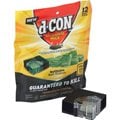 Check the current price |
|
d-CON Rat Poison Bait Station |
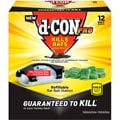 Check the current price |
|
JT Eaton 166004 709-PN Bait Block |
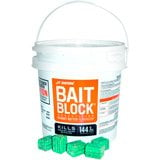 Check the current price |
|
Tomcat Bait Chunx Pail |
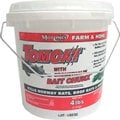 Check the current price |
|
Neogen Ramik Green Rodenticide Nuggets |
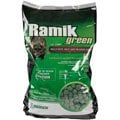 Check the current price |
Why D-CON Is a Trusted Brand
The d-CON brand is one of the best selling rat poisons in the United States. Founded in 1950, d-CON was initially selling rodent control products based on a new chemical compound — warfarin. At that time, the d-CON poison made a breakthrough in the pest management market as a safer alternative to more toxic chemicals.
However, in the 1970s, mice began to develop resistance to warfarin, which reduced the effectiveness of this poison. In the 1980s, d-CON introduced new rodent baits made with brodifacoum. The ingredient’s mode of action is similar to that of warfarin, with the difference that brodifacoum requires fewer doses to kill a rodent. While this poison has proved to be effective, it is more dangerous to non-target animals, which is why it was discontinued five years ago. Brodifacoum was replaced by diphacinone, a milder poison that has a cumulative effect and is not fatal in small doses.
And eventually, d-CON has turned to cholecalciferol, a type of vitamin D that naturally occurs in human skin and some foods but lethal to rodents when used in high doses. This makes cholecalciferol an effective alternative to other rodent poisons that carry risks of accidental and secondary poisoning. Once ingested by a mouse or rat, cholecalciferol causes soft tissue calcification and death.
In 1994, the d-CON brand was acquired by a British company Reckitt Benckiser. Today, d-CON rodent traps, poisons, and bait stations are well-known in the United States. The poisons come either in refillable or disposable bait stations. The d-CON products can also be categorized into those designed specifically for rats and mice.
The Benefits, Effectiveness & Dangers of d-CON Rodent Poisons
While being potent, cholecalciferol differs from other acute toxicants used in rodent poisons in that it does not cause bait shyness. After consuming the poison, a rodent dies in about 3 to 4 days, so other rodents in the colony do not perceive the bait as dangerous.
If you have already used blood thinners to kill your mice or rats and they stopped working, d-CON poisons are exactly what you need now. Cholecalciferol is effective against rodents that have developed resistance to poisons, killing through internal bleeding.
Another essential advantage of d-CON products in that there is no risk of secondary poisoning for predators. According to a paper published by the University of Nebraska-Lincoln, researchers conducted a trial involving 6 dogs. Over the course of two weeks, these animals had been fed solely with dead rats previously poisoned with cholecalciferol. None of the test animals showed any sign of poisoning.
On the other hand, cholecalciferol alone is toxic. The problem with this poison is that it has no antidote and is difficult to treat, Purdue University experts claim. Even though a small amount of cholecalciferol is consumed, it can result in sickness and death. This chemical compound causes a life-threatening level of calcium and phosphorus in the blood leading to acute kidney failure. The toxin is eliminated slowly from the body and, even worse, you may not immediately notice the first signs of poisoning.
And yet, it is believed to be relatively safe to pets if used according to label directions. Hypercalcemia — a dramatic increase in blood calcium levels — occurs in dogs at a dose of 0.5 mg per kg. Given that most rodent poisons are made with 0.075% cholecalciferol, a 20-kilogram dog can be poisoned after consuming 0.5 ounces of the chemical.
For safety reasons, d-CON poisons are sold with bait stations so that neither your pets nor other non-target animals could accidentally eat the dangerous substance. The containers are refillable and can be used multiple times.
Pros & Cons
Now, let’s take a brief look at the main advantages and disadvantages of d-CON poisons.
PROS
- If you have rats or mice that have developed resistance to blood-thinning poisons, d-CON baits will work on them very well.
- d-CON baits do not pose a risk of secondary poisoning to dogs or cats. Should an animal accidentally eat a rodent that died from cholecalciferol intoxication, it will not be poisoned.
- The use of d-CON products does not lead to bait shyness because it takes several days for the poisoned rats and mice to die.
- Cholecalciferol is less toxic to dogs, cats, and birds compared to other rodent poisons.
- d-CON products come ready-to-use and pre-baited.
- A good value. You get high-quality poison blocks with a bait station for just $10 to $17.
CONS
- It may be difficult to place the bait stations in narrow or hard-to-reach spaces.
- d-CON does not offer a wide choice of rodent baits. Many other competitive brands produce different types of baits, such as pellets and chunks, using different ingredients.
- There is no antidote.
A Review of d-CON Rat & Mouse Poisons
Below, you will find a review of d-CON poisons at a price ranging from $10 to $17. These baits contain the same active ingredient, cholecalciferol, but come with different containers. Bait stations intended for rats are larger in size and have a different design.
d-Con Corner Fit Mouse Poison Bait Station | Best for Killing House Mice
The pack includes one container and 12 refill poison blocks made with cholecalciferol. Due to the bait station’s unique design, it can be safely used both inside the house and outdoors. The box is resistant to tampering by animals and children, meaning the bait will not accidentally fall out. Besides, the bait station is weather-resistant, which allows you to place it outdoors even under bad weather conditions. The container has a compact design measuring 1.5 x 8.3 x 9 inches. The manufacturer recommends placing it in the attic, basement, kitchen, bathroom, shed, and garage.
Although the box is sold pre-baited, it is reusable and comes with extra bait. Each block can kill several mice, however, the exact number of killed mice will depend on how much poison each mouse will consume. After eating a lethal dose, mice will die later, typically, in their nest. The nice part about using this bait station is that there is no need for maintenance: just set it and forget it. The transparent window built-in where the bait blocks are located will allow you to monitor bait consumption.
Customers like the product so no wonder it has gained 4 out of 5 stars. One of the buyers says that he has been using d-CON bait stations for several years and it effectively kills mice. Some of them die on the floor while others die somewhere in their nests and dry out. What he particularly likes about this product is that the dead mouse odor — if any — disappears very quickly.
d-Con Corner Fit Mouse Poison Bait Station: Check the current price
{code 1241}
D-con Rat Poison Bait Station | Best for Killing Norway and Roof Rats
With a size of 3.8 x 9.6 x 10.2 inches, this bait station is larger and will easily fit a Norway rat or a roof rat. Like the previous product, this box is tamper-resistant and can be used around children and pets, given you follow all label directions. However, the d-CON rat poison bait station cannot be used outdoors as it is designed for indoor placement only. For better results, place it where signs of rat activity have been noticed, such as droppings, gnawing, and noise in the walls.
The bait station comes with 12 cholecalciferol-based refills. The box holds 6 bait blocks simultaneously, so you will need to refill it only once. By the way, some buyers claim that they have not had to replace the block because rats stopped coming after eating just a few of them. And yet, there are users who say that the bait does not work for them and rats ignore it. Well, much depends on the particular situation. Before placing the bait station, make sure you have removed all alternative food sources as they may be more attractive to rats.
D-con Rat Poison Bait Station: Check the current price
{code 1242}
What Buyers Say: d-CON Reviews
In this review, a man shares his experience with the d-CON mouse bait station and shows how to refill it properly. He notes that the box has two entrances and safety locks on both sides.
Another blogger, who is an owner of a pest control company, recommends not to place bait stations indoors, particularly in the attic. When rodents die, they decompose, creating mold and toxic environment in the air. “Never ever use poisonous baits in your attic,” he concluded.

